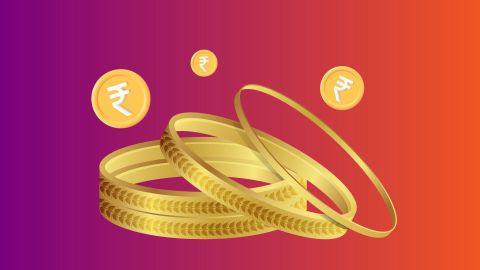2 mins
24 July 2024
Gold in India holds immense cultural and economic significance. It is not only a symbol of wealth and status but also an integral part of traditions and festivals. India is one of the largest consumers of gold globally, with high demand for jewellery and investments. Gold is often considered a safe-haven asset, protecting against inflation and economic uncertainties. Its value and allure make it a cherished possession across the country.
Regulatory updates on KDM gold
In recent years, the regulatory landscape for KDM gold has seen significant updates. The Bureau of Indian Standards (BIS) has imposed strict guidelines prohibiting the use of cadmium in the jewellery manufacturing process. These regulations are part of broader efforts to enhance the safety and quality of gold jewellery in India. The BIS has mandated that all gold jewellery must be hallmarked, ensuring that no cadmium is used in the soldering process. Additionally, the Ministry of Consumer Affairs has been actively involved in promoting awareness about the dangers of cadmium, encouraging jewellers to comply with the new standards. Enforcement agencies conduct regular inspections to ensure adherence to these regulations. Non-compliance can lead to severe penalties, including fines and the suspension of licences. These regulatory updates aim to create a safer environment for both jewellers and consumers, promoting the use of healthier alternatives in the gold jewellery industry.
Reasons behind the KDM gold ban in India
The ban on KDM gold in India stems from multiple health and environmental concerns. The primary reason is the hazardous nature of cadmium, which is highly toxic and can cause severe health issues. Cadmium exposure during the soldering process can lead to respiratory problems, kidney damage, and even cancer. These health risks extend to jewellers and consumers alike. Additionally, cadmium is harmful to the environment, contributing to soil and water pollution when disposed of improperly. Recognising these dangers, the Indian government has taken proactive measures to eliminate cadmium use in the jewellery industry. The ban aligns with global trends and international standards aimed at reducing the use of hazardous substances in consumer products. By enforcing this ban, the government seeks to protect public health and the environment, ensuring that the jewellery industry adopts safer practices and materials in its manufacturing processes.Impact of KDM gold ban on the market
The ban on KDM gold has had a profound impact on the Indian jewellery market. Jewellers have had to swiftly adapt to alternative soldering methods, leading to an initial increase in production costs. This shift has also prompted a rise in gold jewellery prices, as safer soldering materials such as zinc or silver alloys are more expensive. Consumers have become more aware of the health implications associated with cadmium, influencing their purchasing decisions towards safer options. Moreover, the ban has boosted the credibility and quality of Indian jewellery on the international stage, as it aligns with global safety standards. Jewellers have leveraged this shift to market their products as safer and more environmentally friendly, which has attracted a more health-conscious customer base. Overall, while the transition posed challenges initially, the long-term benefits include improved safety, enhanced market reputation, and adherence to international standards.Alternatives to KDM gold in the Indian market
In the wake of the KDM gold ban, the Indian jewellery market has embraced several safer alternatives. One prominent substitute is the use of gold soldered with zinc, which is less harmful and complies with safety regulations. Zinc has a higher melting point than cadmium, making it a viable and safer option for intricate gold designs. Another alternative is the use of silver solder, which also offers a non-toxic solution for jewellery making. These alternatives not only ensure the safety of jewellers but also enhance the overall quality of the finished products. Furthermore, jewellers have explored the use of modern laser soldering techniques, which eliminate the need for traditional soldering materials. This technology provides precise and clean joints without the health risks associated with cadmium. The adoption of these alternatives signifies a positive shift towards safer and more sustainable practices in the Indian jewellery industry.How does the ban on KDM gold affect jewellers and consumers?
The ban on KDM gold has significantly impacted both jewellers and consumers in India. For jewellers, the transition to alternative soldering methods has required considerable investment in new materials and training. This change has initially increased production costs, affecting profit margins. However, it has also presented an opportunity for jewellers to enhance their reputation by adopting safer and more sustainable practices. Consumers, on the other hand, have become more conscious of the health implications of cadmium, leading to a preference for jewellery made with safer alternatives. The ban has fostered greater trust in the quality and safety of Indian jewellery. Additionally, consumers are now more informed and selective, prioritising health and environmental considerations in their purchasing decisions. Overall, while the ban has posed challenges, it has also driven positive changes in industry practices and consumer behaviour.Legal implications of using KDM gold
Using KDM gold in jewellery making now carries significant legal implications in India. The Bureau of Indian Standards (BIS) and other regulatory bodies have imposed strict prohibitions on the use of cadmium in gold soldering. Non-compliance with these regulations can result in severe penalties, including hefty fines and the suspension or revocation of business licences. Jewellers found using cadmium may also face legal action and potential imprisonment for violating health and safety standards. These legal measures aim to enforce adherence to safer practices within the industry. Additionally, consumers have the right to seek legal recourse if they suffer health issues from cadmium exposure through jewellery. Legal liabilities extend to environmental damage caused by improper disposal of cadmium. The stringent legal framework underscores the importance of compliance and the serious consequences of using banned substances in the jewellery manufacturing process.How to identify KDM gold?
Identifying KDM gold requires careful examination and knowledge of certain characteristics. KDM gold is typically marked with a stamp indicating the use of cadmium in the soldering process. This stamp is often found on the inner side of the jewellery piece. Additionally, KDM gold may exhibit a slightly different hue compared to traditional gold due to the presence of cadmium. Consumers should also look for hallmarking, which is a certification of purity and compliance with safety standards. Since the ban, jewellery made with KDM gold is less likely to be sold openly, but older pieces may still be in circulation. Consulting a professional jeweller or using a gold testing kit can help determine the presence of cadmium. It's essential to ensure that the jewellery complies with current safety standards to avoid health risks associated with cadmium exposure.Can you get a gold loan against KDM gold?
Obtaining a gold loan against KDM gold is possible but comes with certain considerations. Financial institutions primarily assess the purity and weight of the gold when determining loan eligibility. While KDM gold refers to the soldering process rather than the gold's purity, banks and NBFCs (Non-Banking Financial Companies) may be cautious due to the health hazards associated with cadmium. However, if the gold jewellery meets the purity standards and is hallmarked, it can still be accepted as collateral for a gold loan. Borrowers should inform the lending institution about the KDM aspect to ensure transparency. Despite the ban, existing KDM gold jewellery retains its value, and securing a gold loan against it remains feasible, provided it meets the required purity criteria.Best practices for securing gold loans with KDM gold
Securing a gold loan with KDM gold involves adhering to best practices to ensure a smooth and transparent process. Firstly, ensure the gold jewellery is hallmarked, indicating its purity and compliance with safety standards. When approaching a lender, provide full disclosure about the KDM aspect to avoid any misunderstandings. Choose reputable financial institutions that offer competitive gold loan rates of interest. It's advisable to get the gold evaluated by a certified jeweller to determine its exact value. Maintaining proper documentation, including purchase receipts and valuation certificates, can facilitate the loan approval process. Be aware of the loan terms and conditions, including the interest rates and repayment schedule. By following these best practices, borrowers can secure a gold loan efficiently, leveraging the value of their KDM gold jewellery while ensuring compliance with current regulations.How does the KDM gold ban affect gold loan eligibility?
The KDM gold ban has implications for gold loan eligibility, primarily due to concerns over cadmium's health risks. While the ban targets the use of cadmium in new jewellery production, existing KDM gold pieces still circulate in the market. Financial institutions are cautious in accepting KDM gold as collateral, focusing on the purity and hallmark certification of the jewellery. Borrowers possessing KDM gold need to ensure their jewellery meets the required purity standards and is properly hallmarked to be considered for a loan. The ban has prompted lenders to implement stricter evaluation criteria, ensuring compliance with safety standards. As a result, while it remains possible to obtain a gold loan with KDM gold, the process involves thorough scrutiny to ensure the jewellery's compliance with current regulations. This heightened diligence aims to protect both the lender and the borrower from potential health and legal issues.Frequently asked questions
Is KDM gold still available in India?
KDM gold, which uses cadmium in the soldering process, is officially banned in India due to health and environmental concerns. However, some older jewellery pieces containing KDM gold may still be in circulation. New jewellery manufacturing with cadmium is prohibited, and jewellers have transitioned to safer alternatives. Regulatory bodies ensure strict compliance with this ban to protect both jewellers and consumers. Therefore, while older pieces may exist, new KDM gold jewellery is not legally available in India.
What are the alternatives to KDM gold?
Alternatives to KDM gold in the Indian market include gold soldered with zinc and silver alloys, both of which are safer and comply with current health regulations. Additionally, laser soldering techniques have gained popularity, as they eliminate the need for traditional soldering materials, providing a cleaner and more precise method. These alternatives ensure jewellers can continue creating intricate designs without compromising safety, thereby aligning with global standards and enhancing the overall quality of gold jewellery.
How does the KDM gold ban impact gold loan applications?
The KDM gold ban impacts gold loan applications by increasing scrutiny on the jewellery's purity and hallmark certification. Financial institutions are cautious due to cadmium's health risks, requiring thorough evaluations to ensure compliance with safety standards. Borrowers with KDM gold need to ensure their jewellery meets the required purity and is properly hallmarked to be eligible for a loan. This heightened diligence aims to protect both lenders and borrowers, ensuring safer and compliant gold loan transactions.
What should I do if I own KDM gold?
If you own KDM gold, consider having it tested by a certified jeweller to confirm its purity and safety. To avoid health risks, you may choose to have the jewellery re-soldered using safer materials. Additionally, ensure it is properly hallmarked to meet current standards. When selling or taking a loan against it, disclose its KDM nature to the buyer or lender. Staying informed about regulations can help you manage your KDM gold responsibly and safely.
Show More
Show Less
Bajaj Finserv App for All Your Financial Needs and Goals
Trusted by 50 million+ customers in India, Bajaj Finserv App is a one-stop solution for all your financial needs and goals.
You can use the Bajaj Finserv App to:
Apply for loans online, such as Instant Personal Loan, Home Loan, Business Loan, Gold Loan, and more.
You can use the Bajaj Finserv App to:
Apply for loans online, such as Instant Personal Loan, Home Loan, Business Loan, Gold Loan, and more.
- Explore and apply for co-branded credit cards online.
- Invest in fixed deposits and mutual funds on the app.
- Choose from multiple insurance for your health, motor and even pocket insurance, from various insurance providers.
- Pay and manage your bills and recharges using the BBPS platform. Use Bajaj Pay and Bajaj Wallet for quick and simple money transfers and transactions.
- Apply for Insta EMI Card and get a pre-approved limit on the app. Explore over 1 million products on the app that can be purchased from a partner store on Easy EMIs.
- Shop from over 100+ brand partners that offer a diverse range of products and services.
- Use specialised tools like EMI calculators, SIP Calculators
- Check your credit score, download loan statements, and even get quick customer support—all on the app.






